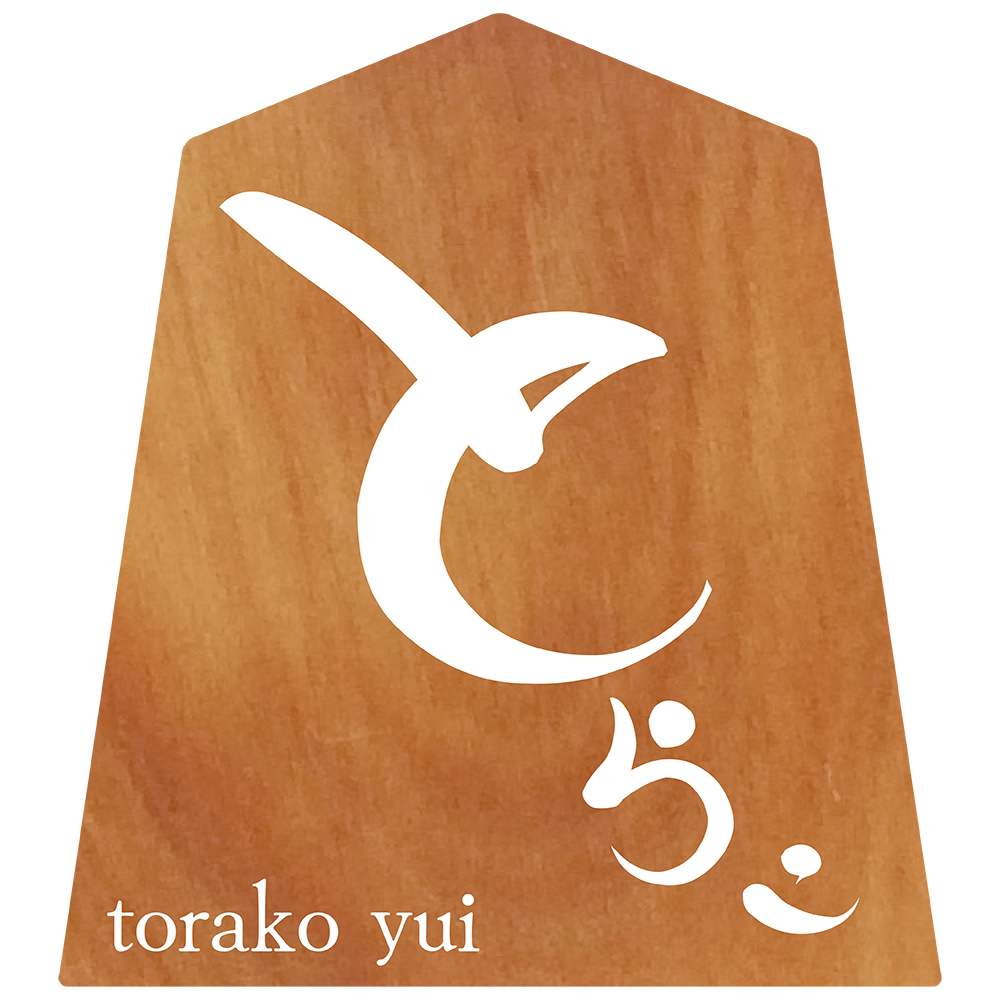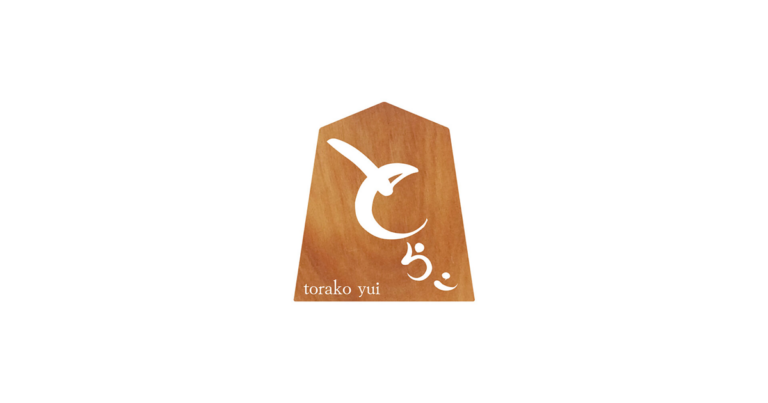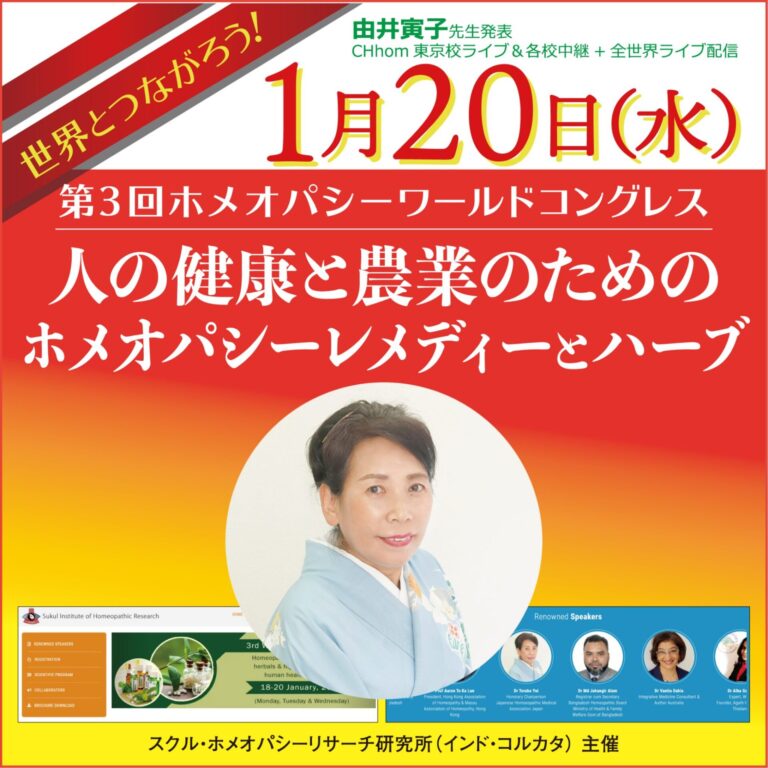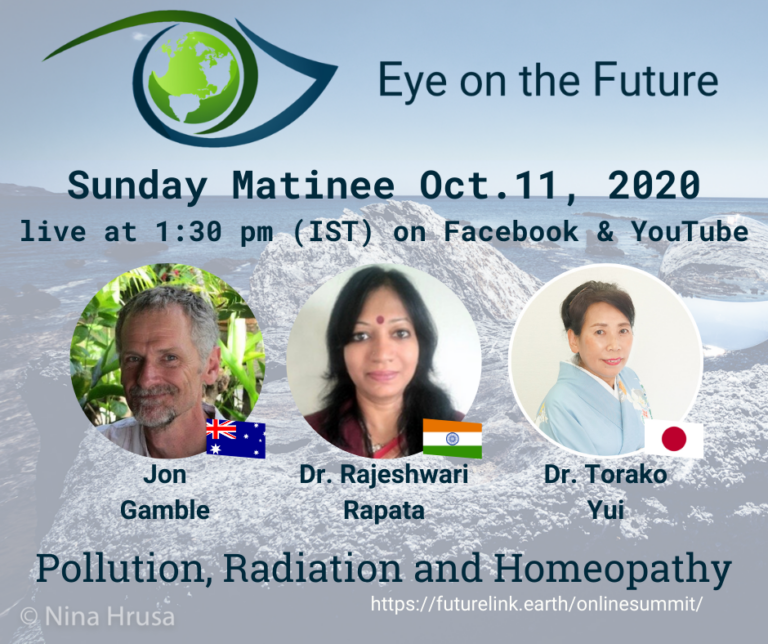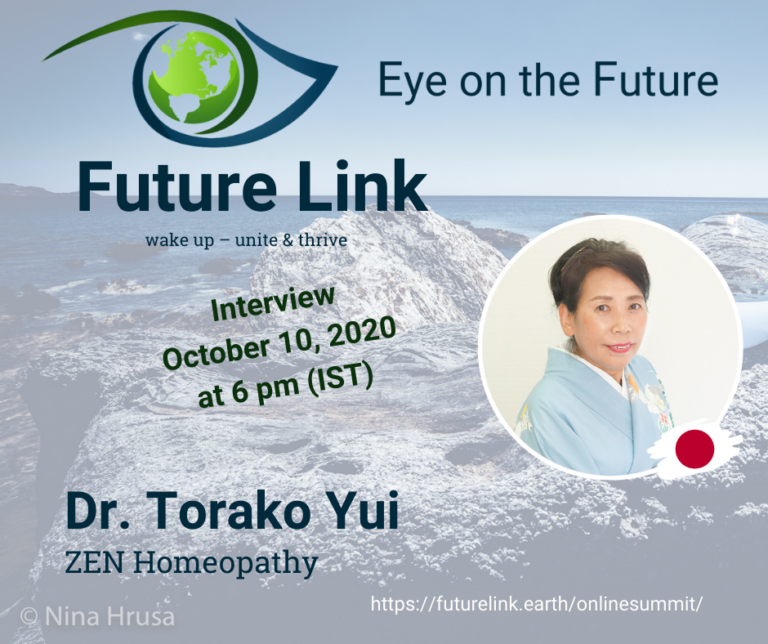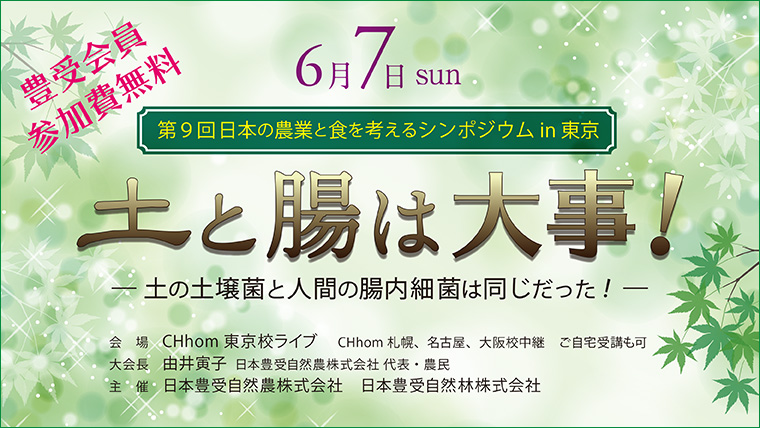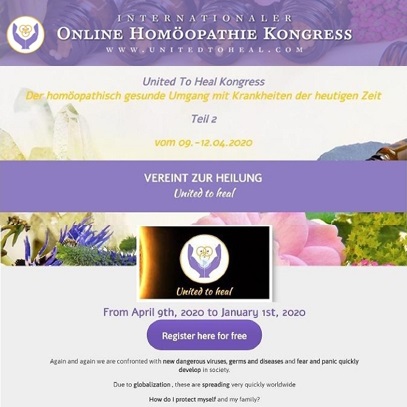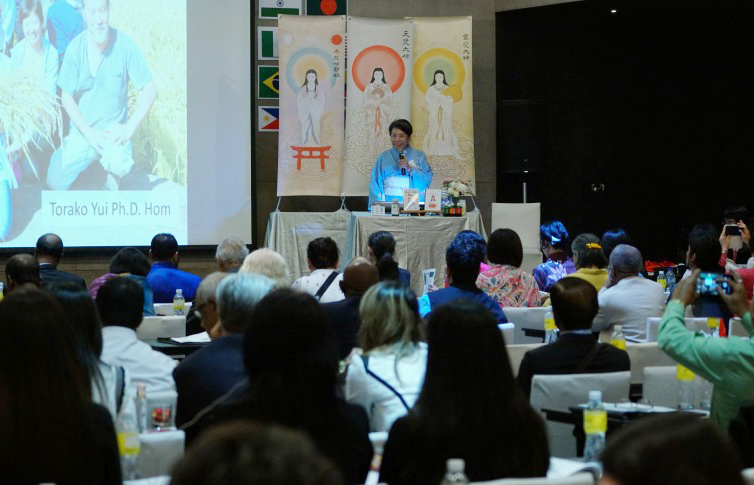2016年3月に発刊されたHomoeopathic LINKS(ホメオパシック・リンクス)2016年29号 (01) は、英国の著名なホメオパシー歴史家、ピーター・モレル氏(英国スタフォード大学 英国ホメオパシー史修士号取得)が、ゲスト編集長を務めました。
昨年5月、モレル氏は、今日、世界中で、ホメオパシーがどれ程に重要で、活性化されており、関心高いものか、真に描写された姿を読者に示す 為、世界の各大陸からの論説コレクションを編集する事を意図し、各国を代表するホメオパスへ寄稿を呼びかける中、由井会長には「日本における現代のホメオパ シー」についての執筆を依頼されました。
この論文は、本年度に留まらず、今まで発表されてきた数多くの論文の中で「最も読まれている論文」の第6位にランキングされています。(2016年9月3日現在)
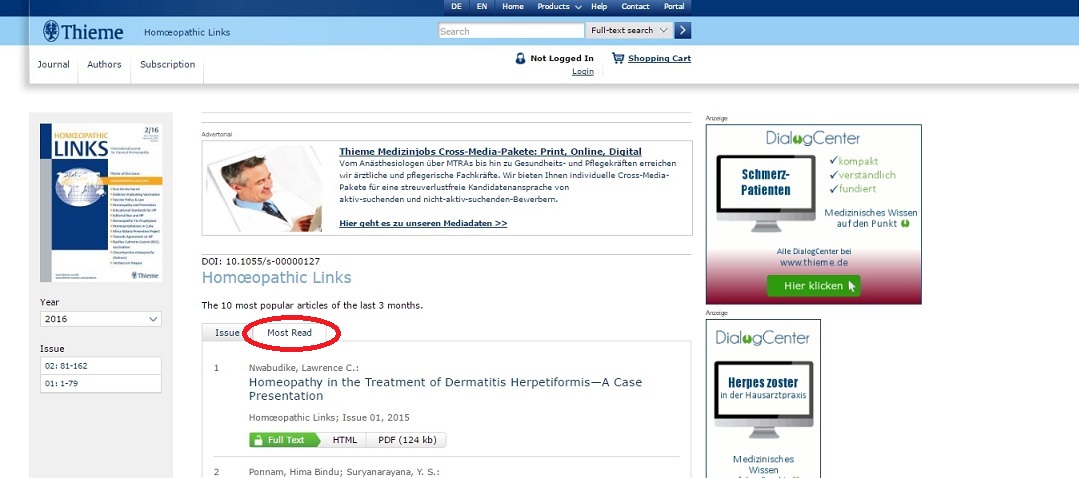
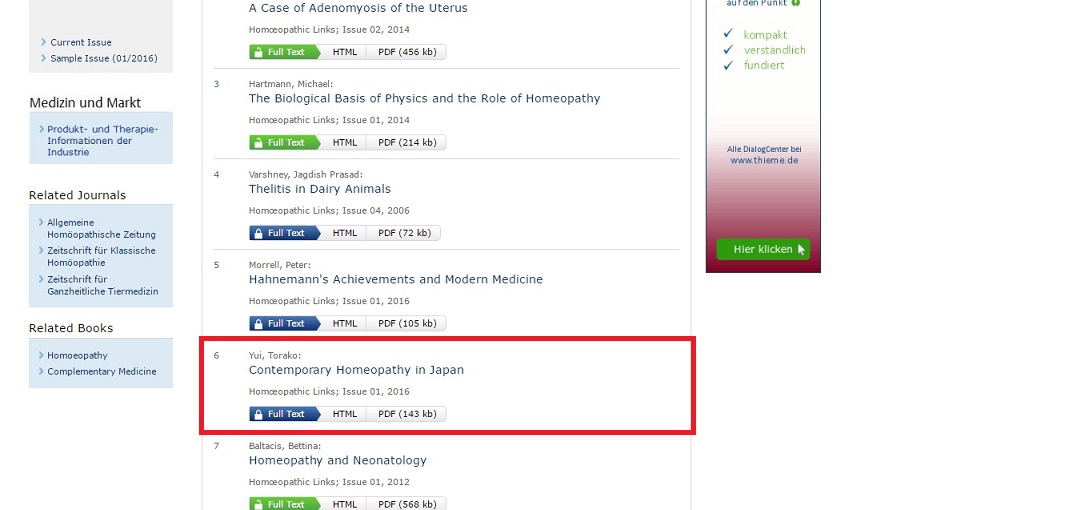
LINKS Issue 01 ・ Vol. 29 ・ March 2016 電子版ウェブサイトページ
【LINKS(リンク ス)について】
ドイツ最大の医科学専門出版社であるティーメ出版(Thieme Verlag)が発行するピア・レビュー誌(査読のあるジャーナル)
1987年設立以来、代替医学会で重要で高い評価を受けているジャーナル。
現在、50か国以上のホメオパス達をつなげ、ホメ オパシーや自然療法の異なる方向や哲学の情報交換を促進している。
編集委員会は経験豊富でホメオパシーに捧げているホメオパス達。
注意深く選択された論説は、治療、哲学、歴史といった様々なトピックの完璧なバラ ンスを保っている。
LINKS 原文
- この論文の見出し部分は、2008年8月に、由井会長が執筆したHpathyへの論文からの出典となります。
Hpathy論文オリジナル

JPHMAのウェブサイトに掲載された和訳抜粋






Contemporary homœopathy in Japan
Torako Yui Ph.D.Hom, Japan
Address: Yato 3 Bldg., 2 – 2- 3 Tamagawadai, Setagaya-ku, Tokyo 158 0096 Japan.
Email address: office@jphma.org
Summary
In this article, the author describes the historical background of homœopathy in Japan and an outline of how she developed the Zen homœopathy.
Keywords
Kojiki, Sakaguchi, RAH, CHhom, Torako Yui, Zen homœopathy, Inner child, values.
Historical background of homœopathy in Japan
The history of homœopathy in Japan is still young. However, when I researched, I found that the concept of homœopathy, which inspired the idea of self-healing, had been passed on by Japanese traditional folk medicine. The idea of homœopathic treatment had in fact been alive since ancient times in Japan, as Kojiki [1], a Japanese record of ancient matters, had already introduced homœopathic ideas.
Homœopathy was not established in Japan, though the words ‘Hahnemann’ and ‘Homœopathy’ were put into Chinese characters and it was partly introduced in the Edo period (1603 – 1868). There are two reasons to consider. Firstly, homœopathy was based on a theory of vitalism, and that approach was too dogmatic in character. It seems that the concept of homœopathy did not coincide with the Japanese sensitivity to pragmatism, which respects practices more than theories. Secondly, Japanese medicine in those days was basically medicinal herbs, acupuncture and moxibustion, which methods had been developed to a very sophisticated art. After the Meiji period, there was an increased flow of medical information from Europe.
Before World War II started (pre-1941), there was a company “Fukuinkoji”, that imported and sold homœopathic remedies from Boericke & Tafel in America in 1933, and their Tokyo branch was located in Meguro-ku. A book, ‘Homœopathic Medicines’ was published by the company. There was a manufacturer of homœopathic remedies in Marugame in Kagawa in the early Showa period, and the Prime Minister at that time, Makoto Saito, wrote, “There is no border for a good medicine.” Japanese medicine had been strongly influenced by German medicine prior to World War II, but it was swayed by American conventional and pharmaceutical medicine after the World War II, when Japan was occupied by the United States.
Just after World War II (1945), Hiroshi Sakaguchi (Kyoto University Medical School graduate) had a strong interest in oriental medicine. He went to Germany to teach acupuncture and moxibustion on the invitation of Dr. Schmidt, who was studying in Japan. While Sakaguchi was teaching acupuncture and moxibustion, he became familiar with homœopathy, a unique therapeutic system, being different from both oriental and western medicine. It was around the 200th year celebration of Hahnemann’s birth. Homœopathy was not a subject of research in the University, but it was rooted firmly as an alternative medicine. Sakaguchi studied homœopathy in a Stuttgart hospital and, after he returned to Japan, wrote ‘Homœopathic Treatment‘, based on his experiences. However, there are some doubts about whether the book captured the essence of homœopathy and it did not have much effect on medical practice in Japan.
In spite of writing the book, Sakaguchi rarely treated people with homœopathy. He said, “The reason why I did not use homœopathy was purely because I did not need to do so.” With this statement he expressed his pride in the effectiveness of acupuncture, moxibustion and Chinese herbal medicine. There is some evidence that homœopathic treatment was practised by a woman doctor named Sakon.
There was an interesting episode in 1975, when Queen Elizabeth visited Japan. She asked to consult with a homœopath, but the Foreign Ministry could not find a Japanese homœopath. She was eventually treated by a homœopath from another country that happened to live in Japan.
Since the 1980s, some people in Japan, who had been abroad, started using homœopathy. This was due to the rising worldwide interest in alternative medicines. Homœopathy has never been introduced to Japan by the mass media, but rather was mentioned as a mysterious treatment by a few spiritual-type magazines in the 1990s. The lack of attention to homœopathy almost seemed intentional, and homœopathy remained obscure until I started my activity in Japan in 1996.
The introduction and spread of homœopathy since 1996 has been called a miracle, as it was so rapid. I had been practising homœopathy in London, when I was asked to give a lecture on homœopathy and give homœopathic consultations in Japan. That is when my activity in Japan began. One after the other, I established the organizations necessary to ground homœopathy in Japan.
Amongst my accomplishments were the establishments of educational and professional organisations, to spread homœopathy promptly and widely. I also focused on educating the public about the splendour of homœopathy through lectures, so that people could learn to treat themselves at home. I provided homœopathic remedies and remedy home kits at low cost to make them accessible to people in Japan.
I have devoted my life to homœopathy and kept spreading it with my colleagues in Japan, praying to gods that Japan would also be blessed with homœopathy. Many overseas homœopaths helped us a lot and I am still continuing my activities with hearty gratitude to them all the time.
I have crisscrossed Japan to give lectures, consultations and tuition since the introduction of homœopathy in 1996, and the number of people who interested in homœopathy increased rapidly. The first Japanese professional homœopath training college, the Japan Royal Academy of Homœopathy (RAH: at present it is The College of Holistic Homœopathy [CHhom]) that I established in 1997, had on average 100 annual enrolments. Homœopathy in Japan was beginning to liven up more and more.
In 2010, the Japanese government inaugurated an ‘Integrative Medicine Project Team (PT)’ to start considering insurance coverage and licensing the system of traditional medicines in the world including homœopathy. Prior to their meeting, I submitted a 280-page material data of homœopathy to the Ministry of Health, Labour and Welfare and the Integrative Medicine Project Team on 26 February. I also visited a person in charge of the PT to explain about homœopathy directly on 19 March. On the next day, it was reported that homœopathy was successfully included in sixteen traditional medicines, which they would examine further on TV.
The time for the era of homœopathy had finally arrived as I opened CHhom afresh by developing the RAH [that I had established in 1997], in order to teach homœopathy and integrative medicine, with the aim of integrating conventional medicine (Western medicine) with the adoption of organotherapy, herbal therapy, flower therapy, and tissue salts therapy as main subjects, and later, alchemy, medical astrology, herbal medicine, and Oriental medicine.
The attack on homœopathy in Japan.
Just as this new start was about to occur, a full-scale attack on homœopathy took place in Japan in the summer of the same year.
A journalist, Mr. N, in a scientific medical group of a major Japanese national newspaper, Asahi Shimbun, Tokyo headquarters, rang the Japanese Homœopathic Medical Association (JPHMA) that I serve as the chairperson, requesting to collect news material. He said, “We have a project featuring homœopathy on ‘Be Report’, that is a Saturday version of Asahi Shimbun. I do not know about homœopathy which is trending now, so would like you to tell me about it in detail.” As he said that the news coverage was to introduce homœopathy, we decided to accept the request. Mr. N visited us on 17th June. I answered sincerely a wide range of questions from the principles and history of homœopathy, to the world situation of homœopathy. On 10th July, we received questions from Mr. N.:
- Our view on the article in The Lancet that claims homœopathy does not have therapeutic effects.
- Our view on the incident that the House of Commons Science and Technology Committee in the U.K. recommended to the government to stop NHS funds to homœopathy in February 2010.
We sent 42 pages of material with regard to his questions by the due date (counterarguments about the credibility of the article in The Lancet from every walk of life; explanation that the recommendation from the House of Commons Science and Technology Committee had not been decided and did not get consent from the Parliament in the U.K.; website content that the House of Lords admits that homœopathy is the safest alternative medicine; legal status and insurance coverage of homœopathy in European countries, etc.). Furthermore, we informed him that the British government rejected the recommendation by the House of Commons Science and Technology Committee on July 28, but he replied us that he could not change the contents as the printing had already been started.
On July 31, we were totally shocked by reading the article on Asahi Shimbun headed ‘The truth of homœopathy is questioned’: ‘The British Parliament says NO’. None of the material, which we prepared with sincere effort, and none of my answers on his interview were used. It was an article that differed from the facts and was intended to damage homœopathy’s credibility.
This journalist, Mr. N, wrote in the newspaper article that, ‘There are many complains of ‘damage’ from homœopathy on the Internet.’ However, he tried to recruit articles saying, ‘I cannot write an article as I have not found any specific ‘damage’ cases of homœopathy. Please contact me if you received any damage from it.’ Even though we provided correct information to Asahi Shimbun, they neither corrected the article nor apologised for the false article. They did not publish the fact that intractable diseases such as developmental disorder cases (90% improved rate) and autoimmune disorder cases were cured by homœopathy. Far from that, they kept carrying on homœopathy-bashing for over 6 months afterwards.
Because of this series of biased articles by Asahi Shimbun, the social credibility of homœopathy was ruined. At the time when I saw many JPHMA members, they shed tears as they became unable to make a living by homœopathy. I felt hatred towards Asahi Shimbun, but, conversely, it is also thanks to them that many Japanese people started to have doubts about information provided by the media and to make sure of the truth for themselves.
We had an opportunity to receive guidance by pharmaceutical administration from the Japanese government and had to change various things rapidly at this time. It was a really hard time for us, but we could protect homœopathy in Japan without being destroyed as we, JPHMA, complied with the guidance promptly.
As of August 2015, when I am writing this article, there are 1,500 graduates from the college, the Japan Royal Academy of Homœopathy (RAH) and the College of Holistic Homœopathy (CHhom), 600 registered homœopaths at the JPHMA, 300 Nippon homœopathy centres recognized by the JPHMA, and 100 animal homœopaths.
It is estimated that at least 200,000 people are now using homœopathy in Japan.
The Zen homœopathy
During the time I was spreading homœopathy and giving homœopathic consultations in Japan, I developed the Zen homœopathy. In Zen homœopathy, plural remedies are prescribed at the same time; I often receive surprised reactions from classical homœopaths!
Our pathology in modern days has unquestionably become complicated under an extreme changing environment, along with rapid development of technologies, compared to pathology in the early modern period.
Classical homœopathy is good and if the Zen homœopathy is also applied, the curative rate will be increased.
Indeed, it is not good to prescribe various remedies wildly as Kent said, however, I would like to explain why multiple remedies are needed for modern people.
I thoroughly read ‘Organon der Heilkunst 6th Auflage’[2],‘Die Chronischen Krankheiten 2nd Auflage’[3] ‘Materia Medica Pura’[4], ‘Lesser writings’ [5], by Dr. Samuel Hahnemann, the founder of homœopathy and the great teacher of all homœopaths. I then felt enabled to deal with complicated pathologies by arranging Hahnemann’s treatment strategy in chronic diseases as he wrote in §279 in The Organon (Kunzli)
“Pure experience absolutely proves that even in a chronic or complicated disease, when there is no extensive damage to some vital organ, and though all other foreign medicinal influence has been withheld from the patient, the dose of the highly potentised homoeopathic remedy beginning the treatment of a significant (chronic) disease can, as a rule, not be made so small
That it is not stronger than the natural disease,
that it cannot at least partially overcome it,
that it cannot at least partially extinguish it in the feelings of the vital principle,
that it cannot start the process of cure.”
(i.e. If there are iatrogenic diseases and dysfunction of organs, diluted and succussed remedies do not work.) Armed with this knowledge I devised the Zen homœopathy through various successful clinical cases over ten years.
During that time, I also noticed that many obdurate diseases were, as well as iatrogenic in origin, caused also by the suffering of the inner child from, for example, feelings of guilt or self-contempt. This is explained in more depth below. The Zen homoeopathy can cover inner child healing (which is a chronic mind state) through the homœopaths’ verbal remedies, as well as treat physical problems, developmental disorders, autoimmune disorders, cancers, and other intractable diseases, through the prescription of homoeopathic remedies.
The merit of the Zen homœopathy is that it is able to treat a chronic miasm (treatment of the soul) by using a chronic miasm remedy which is the fundamental problem of a disease; treat a chronic emotional stress (treatment of the mind) which caused a disease, and treat a symptom of disease or malfunction or dysfunction of an organ which sits in a deep part of the symptom (treatment of the body) at the same time. If there is an iatrogenic disease, a food-related disease, or an environment-related disease, remedies to eliminate the harmful effects are also prescribed at the same time.
This is the core of the Zen homœopathy, three-dimensional prescription (homœopathic prescription to treat the soul, the mind and the body as in the Trinity).
About a chronic miasm, 200 years ago Hahnemann said, “Each of them occupies a particular locality in the organism and causes a disease of these three natural diseases at equal strength.”
*Organon of Medicine 6th edition translated by Kunzli.
- 40: It can also happen that the new disease, after acting for a long time on the organism, finally joins the old one, dissimilar to it, forming with it a complex disease. Each occupies a particular region of the organism, only, as it were, the site characteristically belonging to it – i.e., the organs with which it has a special affinity – and abandons the rest to the disease that is dissimilar to it.
Thus a patient with venereal disease can still contract scabies and vice versa; but these two diseases, being dissimilar, cannot extinguish or cure each other. At the beginning, while the scabies eruption is starting to appear, the venereal symptoms diminish and are suspended; but in time (since the venereal disease is at least as strong as the scabies) the two become associated, i.e., each takes over only the particular parts of the organism with which it has an affinity, and the patient thereby becomes more ill and more difficult to cure.
Modern people with intractable illnesses have more chronic disease such as iatrogenic, food-related or environment-related diseases, along with natural diseases: their pathologies have been complicated, to say nothing of Hahnemann’s ‘three natural diseases (Psora, Sycosis and Syphilis)’ §40, Organon. Many modern people also have malfunctions or dysfunctions of organs. One cause is the certain mineral shortages from non-nutritious food. In order to cover minerals, mother tinctures containing plenty of physical minerals, and tissue salt remedies that enhance the absorption of the minerals, are combined in use. Mother tinctures are also effective to improve malfunction or dysfunction of organs directly, thus they are used as organ supports. Mother tinctures and tissue salt remedies help organs out in this way.
The reason why Dr. Robert Thomas Cooper, a great homœopath of the 19th century, cured a serious disease such as cancer was because he used mother tinctures rich in minerals and vitamins (Arborivital Medicine).
In Zen homœopathy, I have added tissue salt remedies (TS 12X) to cover the lack of essential minerals in modern people. That vegetables lack minerals because the vitality of the soil has been reduced due to the use of chemical fertilizers and agricultural chemicals, is a big factor of modern peoples’ mineral shortage.
The core of the Zen homœopathy is the three-dimensional prescription that approaches the soul, the mind and the body at the same time. In fact, homœopathy has limitations on diseases of the soul and the mind. Inner child healing plays a direct part in the Zen homœopathy’s approach to diseases of the soul and the mind.
We have to understand that a disease exists in the soul, the mind and the body individually and how each disease (a chronic disease) is formed.
Much chronic disease in a body starts from the suppression of a symptom. It goes without saying that many initial symptoms are eliminations of body wastes and toxicity. As we can imagine easily what would happen to our body if defecation or urination were suppressed, if a bodily symptom were suppressed, malfunction or dysfunction of an organ will be brought about. It is a chronic disease of the body.
The same function of this physical symptom exists in the mind. It is an emotion. An emotion arises at the time of psychological stress. The psychological stress occurs when we do not get what we want. In this situation in which our expectations are traduced, an emotion becomes a motive power (an active power). In other words, an emotion is for relieving the psychological stress and is an elimination symptom of the mind. If this emotion is suppressed, it becomes a chronic mental disease in the same way as an iatrogenic disease that is formed by suppressing a symptom of the body. As long as this psychological stress is not released by emerging to the surface, it continues to exist and gnaws at the mind and the body. This suppressed emotion and thought (a chronic disease of the mind) is called ‘inner child’, an unsolved mental problem. The more problems there are with the ‘inner child’, in other words, the more suppressed emotions there are, the lower immunity becomes and the harder to heal, the more iatrogenic diseases and food-related diseases emerge, until they become intractable chronic diseases.
Psychological stress is also caused by values and morals, beliefs in ‘how things should be’, originally impressed by school, family or society. Here are two examples: a person gets stressed if s/he cannot achieve a good examination score if s/he holds the belief that ‘being superior is good’.
Another example: a person gets angry when meeting someone who was late for the appointment as it offends his/her moral code of ‘being late is bad.’ In order to solve the problem fundamentally, it is necessary to release such values and morals. This ‘belief system of values and morals’ could be called a disease of the soul. The soul carries the purpose of living and wishes. That is why the soul can continue to exist. Then, various small purposes, wishes, virtues, values are caused by the will to live. If the value is not according to the value of the soul, the soul will get hurt.
I regard the true nature of miasms to be unnatural values that have turned into instincts. In other words, the chronic psoric miasm relates to a value of ‘being loved is good’ and has a strong relation with the emotion of fear. The chronic sycotic miasm relates to a value of ‘being superior is good’ and has a strong relation with the emotion of sadness. The chronic syphilitic miasm relates to the value of ‘winning is good’ and has a strong relation with the emotion of anger. Various beliefs arise from these miasmatic values and if a soul is caught by the value, it falls ill.
When an emotion arises, it is important to recognize that a suppressed emotion in the past is returning, so remember the past event to release the past emotion; look on the belief which makes the emotion arise, and remember the event which formed the value, in order to release it. Furthermore, a work for regaining oneself by looking for a wish of one’s soul becomes important. Homoeopaths can help patients to release suppressed honest thought or wishes by resonating their sufferings. However, inner child healing can be done only by patient him/herself. A hole in a person’s mind can only become smaller if s/he stays present with his/her inner child and loves that inner child. Nevertheless, a patient can find the power to love his/her inner child if a homoeopath gives him/her unconditional love.
The sad child who would like to cry, but is stopped by holding the value/ moral ‘I mustn’t cry’, becomes filled with a chronic sadness (inner child), and thus feels saddened by even a trivial thing. Ignatia or Natrum mur cannot cure chronic sadness fundamentally. Homœopathic remedies can remove temporal and acute sadness, but if it is a chronic sadness (inner child), the inner child needs to release the suppressed emotions and honest thoughts, and look at values behind such an incident of being denied or unloved, which is the root of the sadness.
Healing the inner child plays a strong part of the Zen homœopathy.
At the same time as the establishment of CHhom, I launched an ‘inner child therapist course’ which gives an emotional education and spirituality improvement for people to live this life better. This course is indispensable for people to forgive themselves, love themselves as they are, and live this life truly.
On the other hand, a homœopathic approach to heal souls depends on a chronic psoric miasm treatment.
For a person who has awakened the chronic psora miasm, useful anti-psoric minerals (such as Calcarea, Sulphur, Silica, etc.) for human bodies, are prescribed as tissue salt remedies. However, it is necessary to prescribe anti-sycotic remedies (Nit-ac, Arg-nit, Plb, etc), poisonous mineral remedies, to people whose sycotic tendency is stronger. At the same time, it is necessary to prescribe anti-syphilitic remedies (Merc, Aur-mur, Petr, etc), poisonous mineral remedies, to people whose syphilitic tendency is stronger.
Prescribing
The Zen homoeopathy (three dimensional approach) addresses the chronic miasm, the emotional stress which caused the disease and the symptoms of the disease.
If there are any iatrogenic, food-related or environmental diseases, remedies are given to eliminate the harmful effects of these, as well as possibly an organ support remedy at the same time.
I normally prescribe three remedies in LM potencies in liquid for morning, afternoon and night.
I also prescribe one bottle of organ support tinctures (combination of some mother tinctures and homœopathic remedies) to mix 10-15 drops into 500ml water and take, little by little, over one day. A client is advised to bang and shake the bottle every time s/he takes it.
As a general rule,
In the morning, an anti-psoric remedy (beneficial mineral remedies).
In the afternoon or evening, a chronic miasm nosode remedy (it relieves the susceptibility).
At night, a main remedy for the current symptom (it is often chosen from plant or animal kingdoms).
I hope the Zen homœopathy is good news for the current situation that we cannot lead patients to be cured without having a multilateral approach to healings of mind and soul at the same time.
Many clients who suffered from intractable diseases that conventional medicine declared ‘incurable’ were cured by the Zen homœopathy, which is a combination of three-dimensional prescription and affectionate words (inner child healing) from homœopaths.
I wish blessings of the Zen homœopathy to be known to more people for patients who suffer from intractable diseases.
References
[1] Ohonoasomiyasumaro: The Kojiki: 712
[2] Hahnemann S: Organon der Heilkunst 6. Auflage (Organon the 6th edition): 1833
[3] Hahnemann S: Die Chronischen Krankheiten 2. Auflage (Chronic Diseases): 1835 – 1839
[4] Hahnemann S: Reine Arzneimittellehre (Materia Medica Pura): 1811 – 1833
[5] Hahnemann S: The lesser writings of Samuel Hahnemann Collected & tr. by R.E. Dudgeon: 1851
